There are a number of factors that can cause corn yields to be lower along the edges of a field. Insect populations that move in from fence rows, herbicide drift from neighboring fields and soil compaction in the end rows, especially in areas that have heavy traffic during harvest.
In some cases, poor performance is specifically associated with exposure of the field edge to wind. Edges adjacent to a road or a shorter crop such as soybeans that are directly exposed to wind fare worse than edges along another corn field that have a greater degree of protection. Poor performance is more frequently observed on the southern and western edges of fields (Figure 1).
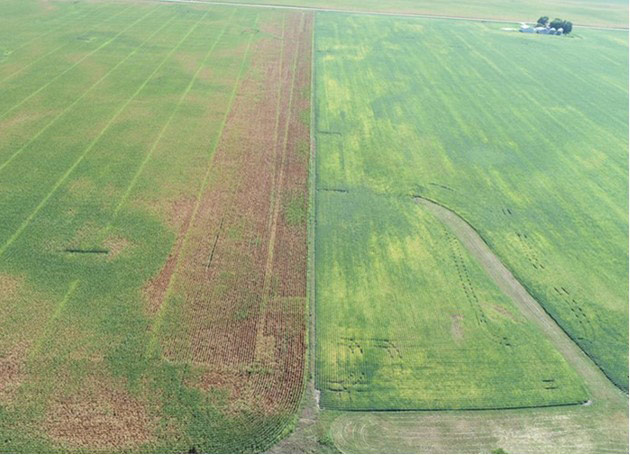
Figure 1 Corn field showing stress symptoms along the western edge of the field (Figure 1). Corn field showing stress symptoms along the western edge of the field, with soybeans in the neighboring field (September 2021).
In cases where herbicide drift can be ruled out, the edge effect is likely associated with the effect of incoming winds on the microclimate within the field. Particularly in hot and dry summers, arid winds can amplify heat and drought stress along exposed edges of the field.
Heat and Drought Stress
Higher temperatures increase crop water demand by creating a higher vapor pressure deficit (VPD) between the saturated leaf interior and the ambient air. Vapor pressure deficit (VPD) is the difference between how much water the air can hold when it is saturated and how much water it currently holds. Air space in the interior of living plant tissue is essentially fully saturated with water. The greater the vapor pressure deficit between the leaf interior and the surrounding air, the faster the rate at which water will be pulled out of the plant and evaporated. Extreme heat dramatically increases water demand – raising temperature from 80 °F to 95 °F (27 °C to 35 °C) causes water demand to double (Lobell et al., 2013).
Vapor Pressure Deficit and Temperature
Extreme heat dramatically increases water demand because VPD increases exponentially with increasing temperature, even as relative humidity (RH) stays constant. For example, if the RH of ambient air is 30%, the vapor pressure deficit will be much greater at 100 °F (38 °C) than at 77 °F (25 °C) (Figure 2), creating a much higher evaporative demand at the higher temperature (Figure 2).
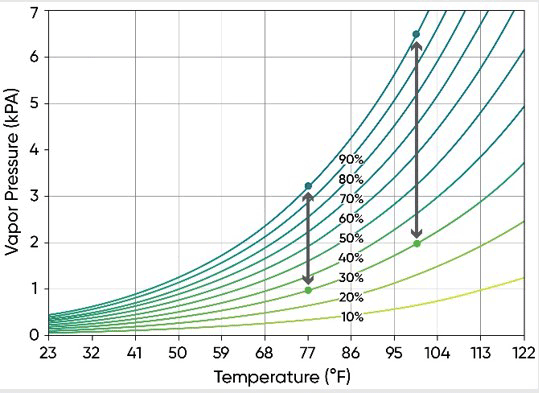
Figure 2 Vapor pressure for water by relative humidity and temperature.
Wind Increases Stress
Wind can exacerbate heat stress by increasing the VPD between the leaves and the air immediately surrounding them. When water is evaporated from plant leaves, the air above the surface gradually becomes more saturated with water vapor. If winds are low, this layer of saturated air stays in place around the crop canopy, causing the evapotranspiration rate to decrease (Figure 3). When winds are high, this layer of saturated air is constantly being removed and replaced with drier air (Allen et al., 1998). At high relative humidity, wind speed will matter less, as the wind will only be able to replace the saturated air with slightly less saturated air. Under arid conditions though, small variations in wind speed may result in larger variations in VPD and evapotranspiration.
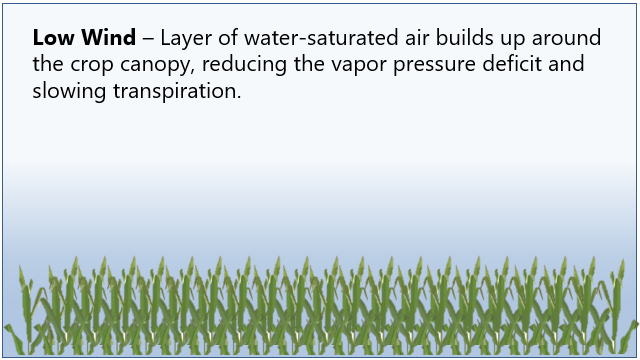
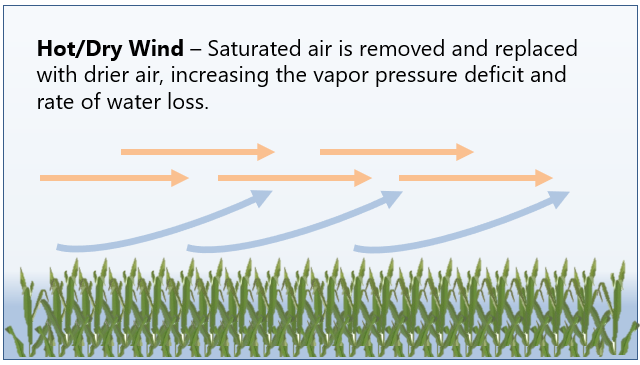
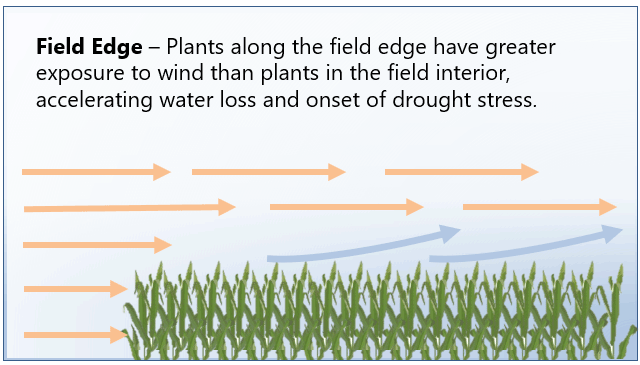
Figure 3 The more severe stress along the field edge is likely due to the fact that the air is driest when it encounters the leading edge of field and picks up moisture as it moves across the crop canopy (White and Licht, 2020; Westgate and Vittetoe, 2017). Consequently, the effect of wind on VPD is greatest for plants near the field edge and lower for plants in the rest of the field (Figure 3).
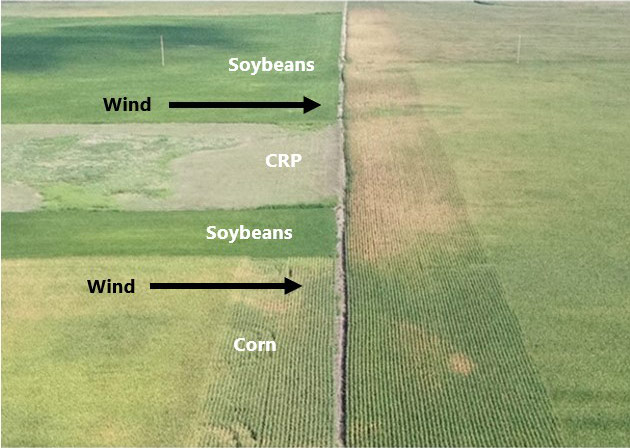
Figure 4 Corn field showing stress symptoms along the edge of the field where it is bordered by soybeans and CRP, but no symptoms where it is bordered by corn (September 2021).
Impact on Corn Plants
Corn plants respond to higher VPD by closing their stomata, which helps preserve water, but also reduces the rate at which plants take in CO2, which lowers the rate of photosynthesis and hurts yield. Greater evaporative demand also increases the rate at which the soil water supply is depleted, which can cause longer-term stress on the crop. Plants on field edges may be at greater risk for sunscald, which occurs when evaporative demand increases faster than the plant is able to respond, causing leaf tissue to die.
Information on yellowing corn leaves can be found here.





